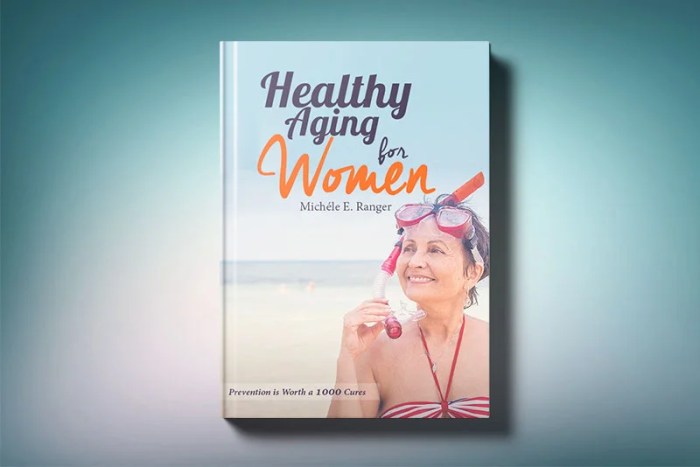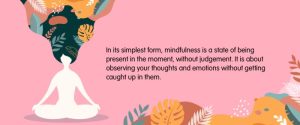
Ever wonder how to age gracefully, feeling fantastic and energized well into your golden years? This isn’t about slowing down; it’s about optimizing your well-being! We’ll explore a holistic approach to healthy aging specifically designed for women, focusing on nutrition, fitness, mental wellness, and managing hormonal changes. Get ready to discover the secrets to a longer, healthier, and more fulfilling life!
From crafting a delicious and nutritious diet packed with bone-boosting foods and brain-sharpening nutrients, to designing a fun and effective exercise plan that fits your lifestyle, we’ll cover it all. We’ll also delve into the importance of stress management, social connection, and navigating the changes that come with menopause. Think of this as your personalized roadmap to a vibrant and empowered future.
Nutrition for Healthy Aging in Women
Maintaining optimal nutrition is crucial for women as they age, significantly impacting bone health, cardiovascular well-being, and cognitive function. A well-planned diet rich in essential nutrients can help mitigate age-related decline and promote a vibrant, healthy life. This section details a balanced dietary approach, focusing on specific food groups, portion sizes, and key micronutrients.
Dietary Plan for Bone Health, Cardiovascular Health, and Cognitive Function
A balanced diet for women over 50 should emphasize calcium-rich foods for bone health, heart-healthy fats and fiber for cardiovascular health, and foods rich in antioxidants and omega-3 fatty acids for cognitive function. A sample daily plan could include:Breakfast (approx. 350-400 calories): A bowl of oatmeal (1/2 cup dry) with berries (1/2 cup) and a sprinkle of nuts (1/4 cup) and seeds (1 tablespoon), providing fiber, antioxidants, and healthy fats.
A glass of fortified milk (1 cup) adds calcium.Lunch (approx. 400-450 calories): A large salad (2 cups) with leafy greens, grilled chicken or fish (4-6 oz), and a variety of colorful vegetables. A light vinaigrette dressing adds flavor without excessive fat.Dinner (approx. 500-550 calories): Baked salmon (4-6 oz) with roasted vegetables (1.5 cups) like broccoli, carrots, and sweet potatoes.
A small portion of quinoa (1/2 cup cooked) provides protein and fiber.Snacks (approx. 100-150 calories each): Greek yogurt (1 cup) with fruit, a handful of almonds (1/4 cup), or a small piece of dark chocolate (1 ounce).
Micronutrients and Age-Related Disease Prevention
Several micronutrients play a vital role in preventing age-related diseases. Maintaining adequate intake of these nutrients is essential for overall health and well-being.
| Micronutrient | Recommended Daily Intake (RDI) (Approximate) | Food Sources | Benefits |
|---|---|---|---|
| Calcium | 1200 mg | Dairy products, leafy green vegetables, fortified foods | Bone health, muscle function |
| Vitamin D | 600 IU | Fatty fish, egg yolks, fortified foods, sunlight exposure | Calcium absorption, bone health, immune function |
| Vitamin B12 | 2.4 mcg | Meat, poultry, fish, dairy products, fortified foods | Nerve function, red blood cell formation |
| Iron | 8 mg (women 51+) | Red meat, beans, lentils, spinach | Oxygen transport, energy production |
| Omega-3 Fatty Acids | Varying recommendations depending on health status | Fatty fish, flaxseeds, chia seeds, walnuts | Heart health, brain function, anti-inflammatory effects |
Healthy Recipes for Women’s Nutritional Needs
Following are examples of recipes catering to the specific nutritional needs of women at different stages of aging. These recipes are illustrative and can be adapted based on individual preferences and dietary restrictions.
- Bone-Boosting Berry Smoothie: Blend 1 cup Greek yogurt, 1/2 cup frozen berries, 1/4 cup spinach, 1 tablespoon chia seeds, and 1/2 cup milk (dairy or plant-based). This provides calcium, vitamin D, and antioxidants.
- Heart-Healthy Salmon with Roasted Vegetables: Season salmon fillets with herbs and bake at 400°F for 15-20 minutes. Roast broccoli, carrots, and sweet potatoes alongside the salmon. This meal is rich in omega-3 fatty acids and fiber.
- Brain-Boosting Quinoa Salad: Combine cooked quinoa with chickpeas, chopped cucumber, tomatoes, feta cheese, and a lemon-herb vinaigrette. This salad provides protein, fiber, and healthy fats.
Exercise and Physical Activity for Women’s Health
Maintaining a regular exercise routine is crucial for women’s health throughout their lifespan, offering significant benefits beyond weight management. Physical activity plays a vital role in preventing age-related diseases, improving mood, and enhancing overall quality of life. This section details a comprehensive exercise program adaptable to various fitness levels, focusing on strength training, cardiovascular health, and flexibility.
Benefits of Regular Physical Activity for Women
Regular physical activity significantly reduces the risk of several age-related health problems common in women. Strength training helps combat osteoporosis, a condition characterized by weakened bones, increasing fracture risk. Osteoporosis is particularly prevalent in postmenopausal women due to decreased estrogen levels. Cardiovascular exercise strengthens the heart and improves circulation, lowering the risk of heart disease, a leading cause of death among women.
Finally, maintaining flexibility through activities like yoga or stretching improves joint mobility and reduces the risk of arthritis, a debilitating joint disease impacting millions. Regular exercise also contributes to better sleep, reduced stress, and improved cognitive function.
A Comprehensive Exercise Program for Women
This program incorporates strength training, cardiovascular exercise, and flexibility training, catering to various fitness levels. Beginners should start slowly and gradually increase intensity and duration. It is crucial to consult a physician before starting any new exercise program, especially if you have pre-existing health conditions.
Warm-up Routine (5-10 minutes)
A proper warm-up prepares your body for exercise, preventing injuries. This could include light cardio, such as brisk walking or jogging in place, followed by dynamic stretches like arm circles, leg swings, and torso twists. The goal is to increase blood flow to muscles and increase body temperature.
Strength Training (2-3 times per week)
Strength training builds muscle mass, strengthens bones, and boosts metabolism. Focus on major muscle groups, including legs, arms, and core. Use bodyweight exercises (squats, push-ups, lunges) or resistance bands initially. As strength increases, incorporate weights or resistance machines. Aim for 2-3 sets of 8-12 repetitions for each exercise.
Cardiovascular Exercise (at least 150 minutes per week)
Cardiovascular exercise strengthens the heart and improves cardiovascular health. Choose activities you enjoy, such as brisk walking, jogging, swimming, cycling, or dancing. Aim for at least 30 minutes of moderate-intensity cardio most days of the week. Gradually increase duration and intensity as fitness improves.
Flexibility Training (2-3 times per week)
Flexibility training improves joint mobility, reduces muscle stiffness, and prevents injuries. Incorporate static stretches, holding each stretch for 15-30 seconds. Focus on major muscle groups, including legs, arms, and back. Yoga and Pilates are excellent options for improving flexibility.
Cool-down Routine (5-10 minutes)
A cool-down helps your body gradually return to a resting state. This could include light cardio, such as slow walking, followed by static stretches, holding each stretch for 30 seconds. This helps reduce muscle soreness and improve recovery.
Sample Weekly Exercise Schedule
| Day | Morning | Afternoon | Evening |
|---|---|---|---|
| Monday | 30 min Brisk Walking | Strength Training (Legs & Core) | Yoga (30 min) |
| Tuesday | 30 min Swimming | Rest | Stretching (15 min) |
| Wednesday | 30 min Brisk Walking | Strength Training (Upper Body) | Rest |
| Thursday | 30 min Cycling | Rest | Yoga (30 min) |
| Friday | 30 min Brisk Walking | Strength Training (Full Body) | Stretching (15 min) |
| Saturday | 60 min Hiking | Rest | Rest |
| Sunday | Rest | Rest | Pilates (30 min) |
Mental Wellness and Cognitive Health in Aging Women

Maintaining mental wellness and cognitive health is crucial for women as they age, contributing significantly to their overall quality of life and independence. A sharp mind allows for continued engagement in life’s joys, from pursuing hobbies to maintaining strong relationships. This section explores practical strategies to support cognitive function and emotional well-being during this life stage.
Stress Management Techniques for Cognitive Health
Stress significantly impacts cognitive function, potentially accelerating cognitive decline. Fortunately, several techniques can effectively manage stress and protect cognitive health. Meditation, yoga, and mindfulness practices have shown promise in reducing stress hormones and improving cognitive performance. These practices cultivate a sense of calm and focus, enhancing mental clarity and resilience.
Guided Meditation Exercise
Find a quiet space where you can sit or lie down comfortably. Close your eyes gently. Begin by focusing on your breath, noticing the sensation of the air entering and leaving your nostrils. If your mind wanders (and it will!), gently guide your attention back to your breath. Now, visualize a peaceful scene – perhaps a beach, a forest, or a mountaintop.
Engage all your senses in this visualization: feel the warmth of the sun, hear the sounds of nature, smell the fresh air. Continue this for 5-10 minutes, then slowly bring your awareness back to your surroundings. Practice this daily, even for just a few minutes, to reap the benefits.
The Impact of Social Interaction and Engagement
Social connection plays a vital role in maintaining cognitive function and overall well-being in older women. Regular social interaction stimulates the brain, reducing the risk of cognitive decline and promoting a sense of purpose and belonging. Loneliness, on the other hand, is linked to increased risk of cognitive impairment and depression. Maintaining active social lives, through participation in social groups, volunteering, or simply spending time with loved ones, is an important investment in cognitive health.
A Plan for Maintaining Cognitive Sharpness
Maintaining cognitive sharpness involves a multifaceted approach that combines brain training, lifelong learning, and healthy lifestyle choices. Here’s a plan incorporating these elements:
- Brain Training Activities: Engage in activities that challenge your brain regularly. This could include puzzles (crosswords, Sudoku), brain-training apps, learning a new language, or playing strategy games.
- Lifelong Learning: Continuously learn new things. Take a class, join a book club, attend lectures, or explore a new hobby. The act of learning stimulates brain plasticity, keeping your mind agile.
- Physical Exercise: Regular physical activity boosts blood flow to the brain, improving cognitive function. Aim for at least 30 minutes of moderate-intensity exercise most days of the week.
- Healthy Diet: A balanced diet rich in fruits, vegetables, and omega-3 fatty acids supports brain health. Limit processed foods, sugar, and unhealthy fats.
- Social Engagement: Maintain a strong social network through regular interaction with friends, family, and community groups. This combats loneliness and stimulates cognitive function.
- Mindfulness and Stress Reduction: Practice mindfulness techniques like meditation or yoga to reduce stress and improve focus. Stress negatively impacts cognitive function.
- Adequate Sleep: Aim for 7-8 hours of quality sleep each night. Sleep is crucial for memory consolidation and overall brain health.
Hormonal Changes and Women’s Health
Menopause, the natural cessation of menstruation, marks a significant transition in a woman’s life, bringing with it a cascade of hormonal shifts that can impact various aspects of her well-being. Understanding these changes and their potential effects is crucial for proactive health management and maintaining a high quality of life during this phase. This section will explore the physiological changes associated with menopause, strategies for managing common symptoms, and the considerations surrounding hormone replacement therapy.
Physiological Changes During Menopause and Their Impact on Overall Health
The decline in estrogen and progesterone production during perimenopause (the transition to menopause) and menopause itself triggers a range of physiological changes. These include hot flashes (sudden sensations of intense heat), night sweats (excessive perspiration during sleep), sleep disturbances (insomnia, difficulty falling asleep or staying asleep), vaginal dryness, mood swings, and changes in libido. Beyond these common symptoms, the reduction in estrogen can also increase the risk of osteoporosis (weakening of bones), cardiovascular disease, and cognitive decline.
The impact on overall health varies greatly among women, depending on individual factors such as genetics, lifestyle, and pre-existing conditions. Early recognition of symptoms and proactive management are essential for mitigating these potential risks.
Managing Menopausal Symptoms: Hot Flashes and Sleep Disturbances
Hot flashes, characterized by sudden feelings of intense heat spreading across the body, often accompanied by sweating and redness, are a highly prevalent symptom. Effective management strategies include lifestyle modifications like regular exercise, maintaining a cool sleep environment, avoiding trigger foods (such as spicy foods or alcohol), and practicing stress-reduction techniques like yoga or meditation. For severe hot flashes, certain medications, such as selective serotonin reuptake inhibitors (SSRIs) or clonidine, may be prescribed by a physician.Sleep disturbances are another common challenge during menopause.
Strategies for improving sleep quality include establishing a regular sleep schedule, creating a relaxing bedtime routine, optimizing the sleep environment (dark, quiet, and cool), and engaging in regular physical activity. Cognitive behavioral therapy for insomnia (CBT-I) can be particularly effective in addressing underlying sleep problems. In some cases, hormone therapy may be considered to help alleviate sleep disruptions linked to hormonal changes.
Hormone Replacement Therapy (HRT) Options: Benefits and Risks
Hormone replacement therapy (HRT) involves supplementing declining estrogen and sometimes progesterone levels. Different types of HRT exist, each with its own benefits and risks. The decision to pursue HRT should be made in consultation with a healthcare professional, considering individual risk factors and preferences.
| Type of HRT | Estrogen Source | Progesterone Source (if applicable) | Potential Benefits/Risks |
|---|---|---|---|
| Estrogen-only therapy | Oral, transdermal patch, topical cream, vaginal cream | N/A | Benefits: Alleviates vasomotor symptoms (hot flashes), may protect against bone loss. Risks: Increased risk of blood clots, stroke, breast cancer (depending on type and duration). |
| Combined HRT (estrogen and progesterone) | Oral, transdermal patch | Oral, transdermal | Benefits: Alleviates vasomotor symptoms, may protect against bone loss, reduces risk of endometrial cancer (when used with estrogen). Risks: Similar to estrogen-only therapy, plus increased risk of breast cancer. |
| Bioidentical HRT | Chemically identical to hormones naturally produced by the body. | Chemically identical to hormones naturally produced by the body. | Benefits: Some believe it offers more natural approach. Risks: Similar risks as other HRT types; less research available on long-term safety. |
| Testosterone Therapy | Oral, transdermal patch, injection | N/A | Benefits: May improve libido, energy levels, and muscle mass. Risks: Potential side effects include acne, oily skin, hair growth. Should only be used under strict medical supervision. |
Lifestyle Modifications for Alleviating Menopausal Symptoms
Adopting a healthy lifestyle can significantly contribute to managing menopausal symptoms naturally. A balanced diet rich in fruits, vegetables, whole grains, and lean protein supports overall health and can help alleviate some symptoms. Regular exercise, including both aerobic and strength training, helps improve bone density, reduce stress, and improve sleep quality. Stress-reduction techniques, such as yoga, meditation, deep breathing exercises, and spending time in nature, can effectively manage mood swings, sleep disturbances, and hot flashes.
Maintaining a healthy weight and limiting alcohol consumption are also beneficial. Furthermore, ensuring adequate sleep, prioritizing social connections, and engaging in activities that promote a sense of purpose and fulfillment contribute to overall well-being during this life stage.
Women & Health

Preventive healthcare is crucial for women of all ages, empowering them to maintain optimal health and well-being throughout their lives. Taking a proactive approach, through regular screenings and a healthy lifestyle, significantly reduces the risk of developing serious health problems and improves the chances of early detection and successful treatment should issues arise. This section provides a comprehensive guide to essential preventive healthcare strategies for women.
Essential Preventive Health Screenings and Vaccinations
Regular preventive screenings and vaccinations are vital components of a proactive healthcare approach for women. These measures allow for early detection of potential health concerns, enabling timely intervention and improved outcomes. The specific recommendations vary depending on age, family history, and individual risk factors. It’s always best to discuss a personalized plan with your healthcare provider.
- Pap Smear/HPV Test: Screening for cervical cancer, typically starting at age 21. Frequency varies depending on results and age.
- Mammogram: Screening for breast cancer, typically starting at age 40 or earlier if there is a family history. Frequency depends on risk factors and individual circumstances.
- Bone Density Scan (DEXA): Assesses bone health and risk of osteoporosis, often recommended for women over 65 or those with risk factors.
- Colonoscopy: Screening for colorectal cancer, typically starting at age 50, or earlier if there is a family history. Frequency varies depending on results.
- Lipid Panel: Checks cholesterol levels, helping to assess risk for heart disease. Frequency depends on individual risk factors and age.
- Blood Pressure Check: Regular monitoring is crucial for detecting and managing hypertension.
- Influenza (Flu) Vaccine: Annual vaccination is recommended for all women over six months old.
- COVID-19 Vaccine: Recommended for all eligible women to protect against the virus.
- Shingles Vaccine: Recommended for adults over 50 to prevent shingles.
- Pneumonia Vaccine: Recommended for adults over 65 or those with certain health conditions.
Regular Check-ups with Healthcare Professionals
Regular check-ups are essential for early detection and management of potential health issues. These visits provide an opportunity to discuss concerns, receive preventive care, and undergo necessary screenings. Early detection of conditions like high blood pressure, high cholesterol, or precancerous lesions can significantly improve treatment outcomes and quality of life. A proactive approach to healthcare through regular check-ups fosters a strong doctor-patient relationship, building trust and ensuring that any health concerns are addressed promptly and effectively.
Recommended Screenings and Vaccinations Timeline
The following table provides a general guideline for recommended screenings and vaccinations for women throughout their lives. Remember, this is a general guideline, and individual needs may vary. Always consult your healthcare provider for personalized recommendations based on your specific health history and risk factors.
| Age Range | Screenings | Vaccinations | Other Recommendations |
|---|---|---|---|
| 21-29 | Pap smear every 3 years | HPV vaccine (if not previously vaccinated), Flu vaccine (annually) | Regular physical exams, healthy lifestyle choices |
| 30-39 | Pap smear/HPV test (co-testing every 5 years or Pap smear every 3 years), Breast self-exam | Flu vaccine (annually), COVID-19 vaccine | Regular physical exams, discuss breast cancer risk with doctor |
| 40-49 | Mammogram annually, Pap smear/HPV test (as recommended), Colonoscopy | Flu vaccine (annually), Shingles vaccine, COVID-19 vaccine | Regular physical exams, discuss family history and individual risk factors with doctor |
| 50+ | Mammogram annually, Colonoscopy (as recommended), Bone density scan, Lipid panel | Flu vaccine (annually), Shingles vaccine, Pneumonia vaccine, COVID-19 vaccine | Regular physical exams, manage chronic conditions, healthy lifestyle choices |
Last Word
Embarking on the journey to healthy aging is an investment in your future self – a future filled with energy, vitality, and joy. Remember, it’s not about achieving perfection, but about making sustainable choices that support your overall well-being. By embracing a holistic approach that prioritizes nutrition, exercise, mental wellness, and proactive healthcare, you’re taking charge of your health and setting the stage for a truly fulfilling life.
So, let’s celebrate this incredible chapter and make the most of every moment!
User Queries
What are some easy ways to incorporate more movement into my daily routine?
Take the stairs instead of the elevator, walk or bike instead of driving short distances, and incorporate short bursts of activity throughout the day like stretching or a quick walk around the block.
How can I manage stress effectively without medication?
Practice mindfulness techniques like deep breathing, meditation, or yoga. Engage in hobbies you enjoy, spend time in nature, and prioritize quality sleep.
Is hormone replacement therapy right for everyone?
No, HRT is a personalized decision based on individual needs and health risks. Consult your doctor to determine if it’s appropriate for you.
What are some signs I should see my doctor immediately?
Severe chest pain, sudden dizziness, significant changes in vision or hearing, and unexplained weight loss warrant immediate medical attention.





